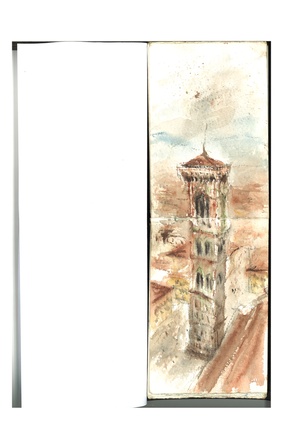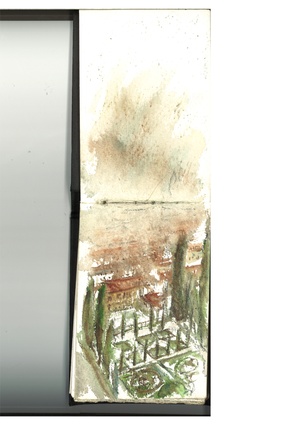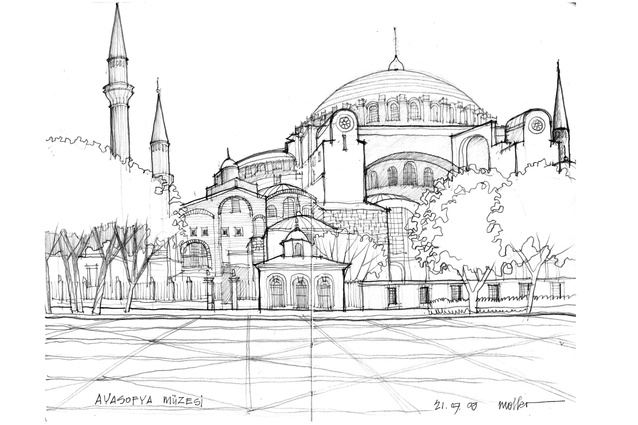Summer series #4: Grand Tour drawings
Throughout history, architects have sketched and painted their way around the globe to try and understand other architects’ buildings. Here, in the fourth installation of our Grand Tour summer series, we showcase the sketches of New Zealand architect Jasper van der Lingen from Sheppard & Rout Architects and Gordon Moller from Moller Architects.
JASPER VAN DER LINGEN
Where were these watercolours made?
The Giardino Giusti, Verona, Italy
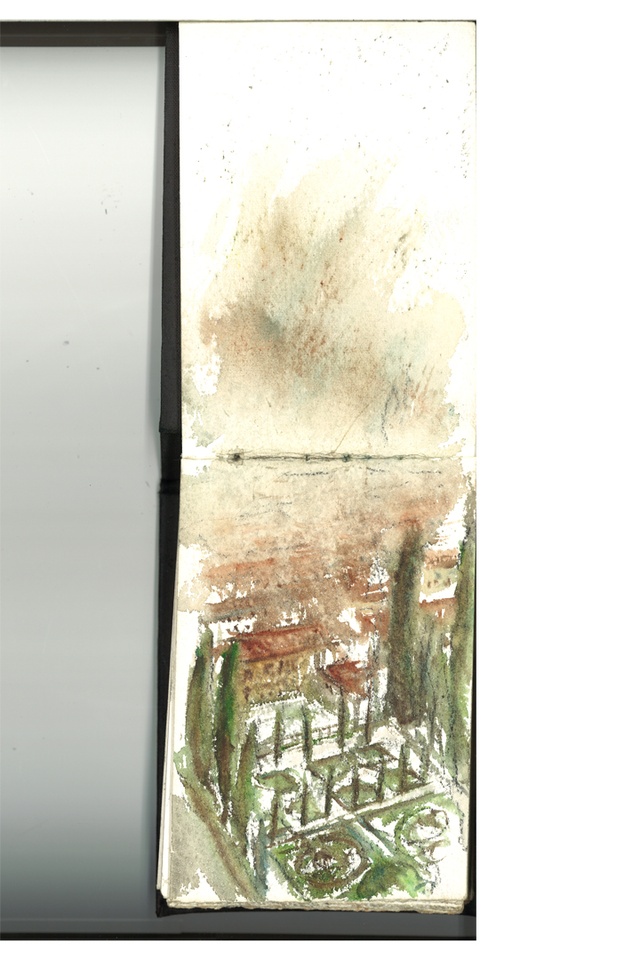
View over Florence, Italy
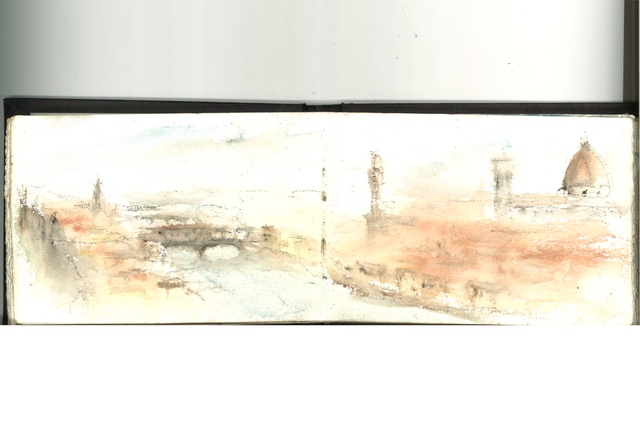
Villa Rotonda by Andrea Palladio, just outside Vicenza, Italy

Campanile by Giotto in Florence, Italy
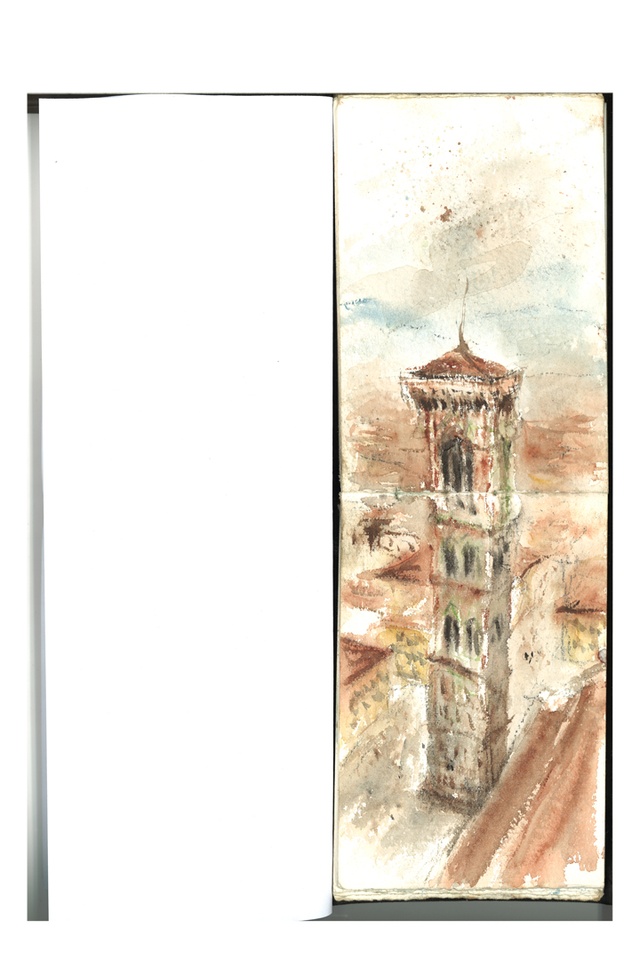
Why did you choose this site to explore?
Italy is the classic ‘grand tour’ location. The Italian townscapes and gardens are some of the most poetic visions of human habitation in nature in Western civilisation.
How long do your paintings take to produce?
20 – 30 minutes.
What materials do you use?
Watercolour often. Sometimes ink on paper.
Why do you enjoy drawing while travelling?
Drawing is a chance to pause and really look at something in depth. My drawings are not trying to analyse detail and precision rather they are attempts to capture a mood and ambience of a place. Places where humans have resided for many years have a sense of being infused with memories and melancholy which give them a very particular atmosphere. This uniqueness and otherness is what interests me. Drawing seems one of the best ways to explore this.
Any interesting feedback from passersby?
Not really – more a quiet curiosity and the occasional looking over my shoulder.
Why choose hand-drawing over digital?
Drawing by hand seems more immediate with the physical connection to the texture of the paper. With watercolour in particular it is hard to erase (unlike digital) so it encourages you to really look and accept mistakes as part of the character of the moment.
GORDON MOLLER
The Hagia Sophia (Ayasofya Müzesi), Istanbul, Turkey
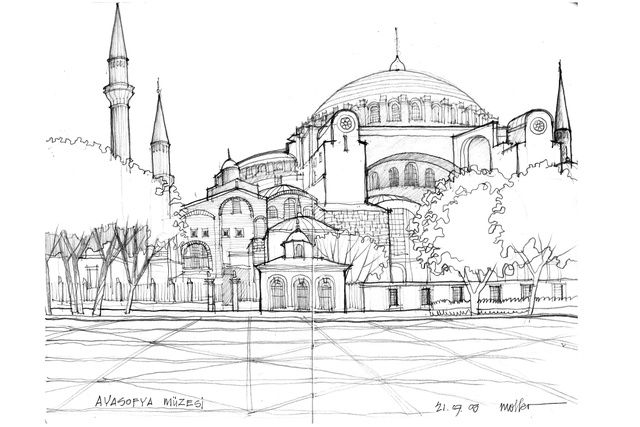
- The Hagia Sophia was built from AD532 – during the Byzantine period of architecture. It subsequently became a mosque and is now a museum. I always admired it from School of Architecture days – a dome over a square. The minarets were an elegant reference for the design of Sky Tower in Auckland.
- This took about about one hour to draw.
Frank Lloyd Wright’s Guggenheim Museum, New York
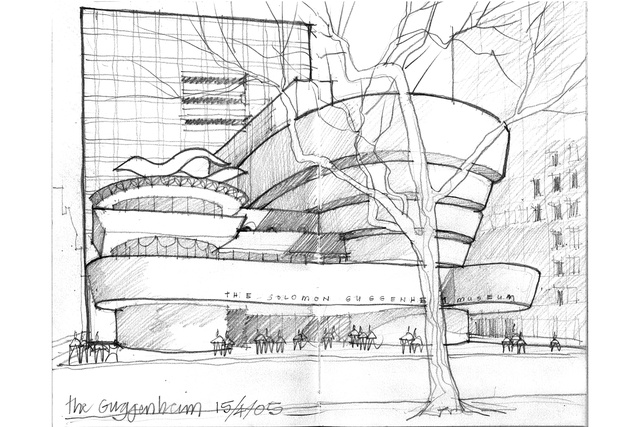
- Frank Lloyd Wright was always of great interest during my School of Architecture days, along with Le Corbusier and Mies van der Rohe.
- This took one hour to draw.
Petra, Jordan
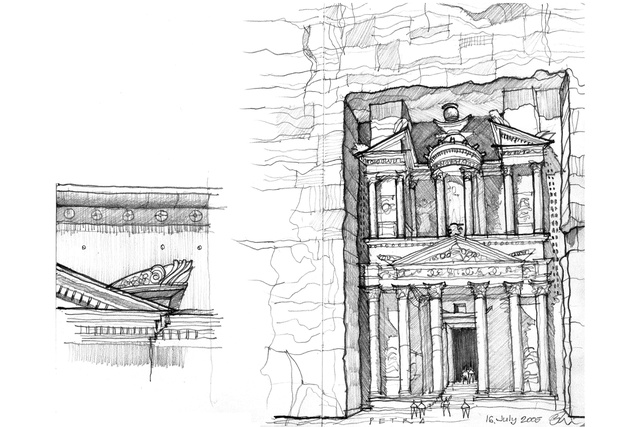
- Buildings at Petra are ‘carved’ out of the rock. Where one expects to see separate elements of architecture ‘assembled’ to create form and space, this is created from the ‘solid’.
- It took 90 minutes to draw, and was a challenge, requiring constant visual reference, including the detail on the left. Many tourists were present, and my sketching became a constant spectator sport!
Bahla fort, Oman
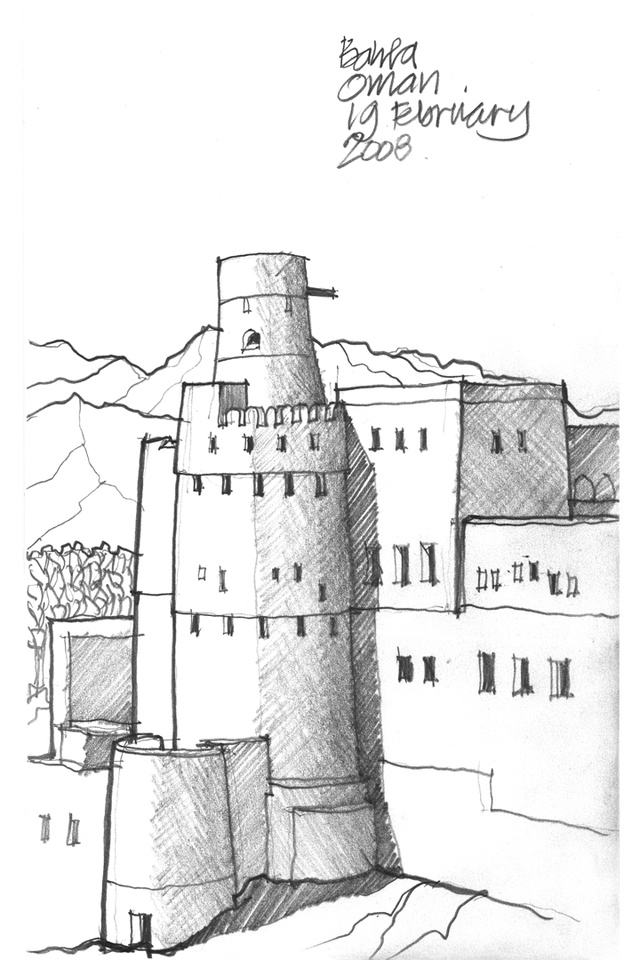
- Travelled inland Oman to view early built form while designing new houses of parliament in Muscat with my architect son, Craig Moller.
- Took forty-five minutes, in 45 degree heat.
What materials do you use?
We travel with a 2B pencil and a Moleskine plain-page sketchbooks and use it as an illustrated diary, with notes on what we have seen and experienced. Sketches are of significant architecture, places or ‘experiences’ – often piazzas, squares, public spaces, towns, villages – places to stop for a coffee, rest, respite and to ‘experience’ a sketch while dwelling there, for a while. To sketch a building is to ‘feel it’.



